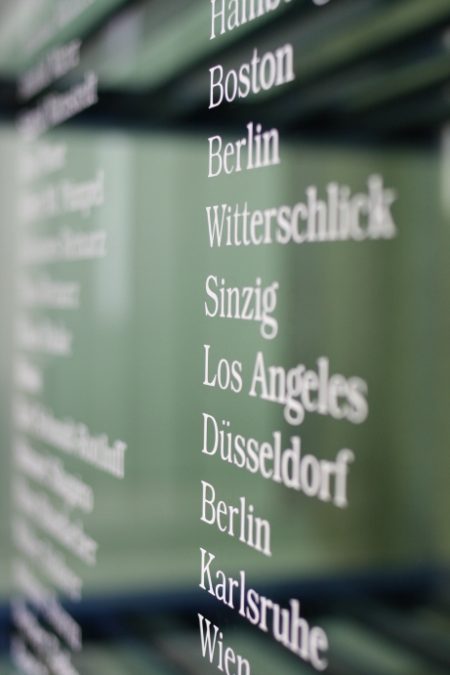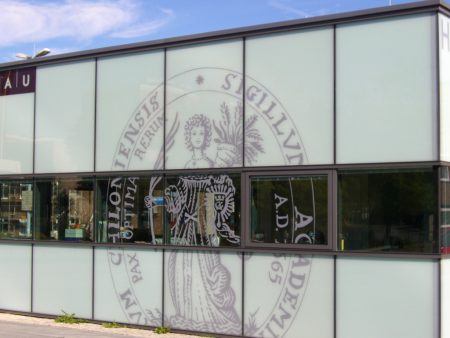ipadecor – ceramic screen printing offers almost unlimited styling and design possibilities for glass
With this printing technique sophisticated equipment is used to print the colours through a finely woven fabric directly onto the glass panes. The printing of coloured areas and image motifs is of excellent quality and outstanding print resolution.
ipadecor –ceramic screen printing is available in a multitude of standard decorative designs, for example for interior doors. If desired, metallic colours, etching colours and special tones as well as colour and motif combinations in photo quality can be realized. Special "S1de ONE" colours, for example, if used on the outside (Pos1) and regularly cleaned, guarantee an extremely high resistance to weathering and UV light and prevent reflection effects.

Applications

Ceramic printing techniques can be used to produce modern glass designs for large-scale projects such as façades, all-glass constructions, insulation and parapet glazing, but are equally suitable for interior use: cupboards and shelves, bathroom furniture, shower walls, kitchen products, shop fittings, dividing wall systems, doors and many other applications. Also here, the high-definition colour printing of illustrations, decoration, text, graphics and photos etc. is possible.
Maximum size: 150 cm x 330 cm
Minimum size: 20 cm x 30 cm
Maximum weight: 120 kg
- Use of digital picture motifs (pdf, eps, psd, ai, cdr, tif, jpg, dwg, dxf, bmp)
- Preparation and process control by in-house graphic designers
- Permanent baking-in of the colours after thermal toughening
- Exterior use unproblematic
- Printing on glass thicknesses from 4 mm to 19 mm
- Use of etching colours
- Fine masking for sand blasting techniques
- Variable use of opacity, including opaque colours
- Heat treatment to thermally toughened glass or single-pane safety glass possible
- Resistant to light degradation, scratches and abrasion
Options:
- Subsequent coating (solar control / heat protection)
- Further processing to insulation glass
- Further processing to structural façade glass